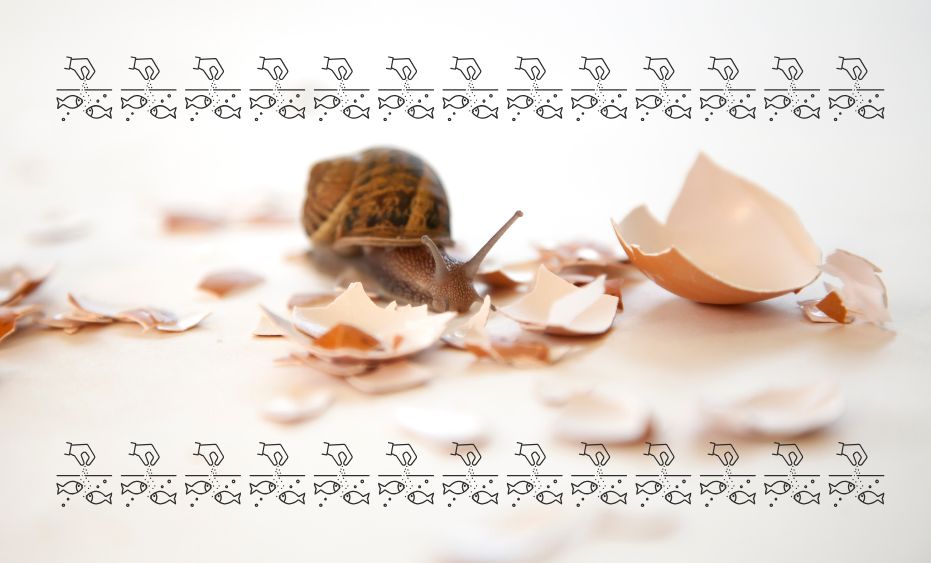When I first heard about adding eggshells to a fish tank, I thought it was a strange idea. Eggshells? In a tank? It didn’t make sense at first. But as someone who loves trying sustainable and natural solutions, I decided to give it a shot. What followed was a mix of surprises, lessons, and, yes, a few mistakes. Here’s my story.
How It All Started
I noticed my snails weren’t looking their best. Their shells seemed dull, and a couple even had tiny cracks. After digging around online, I found out snails need calcium to keep their shells strong. One surprising solution? Eggshells. Something I had been tossing in the trash for years could actually help my tank’s ecosystem. I had to try it.
What the Experts Said
Before jumping in, I did some research (because, let’s face it, I didn’t want to mess up my tank). Here’s what I learned from the pros:
Eggshells Are Calcium Gold, they’re made mostly of calcium carbonate, which snails love and need for shell health.
You can’t just toss raw eggshells in the tank – gross. They need to be cleaned and boiled to remove bacteria. Adding too much at once can make the water cloudy or spike the pH. Go slow and steady.
My First Try: The Good, the Bad, and the Messy
Feeling semi-confident, I started my eggshell experiment. Spoiler: It didn’t go perfectly, but hey, that’s how we learn, right?
I boiled the shells to sterilize them, but I didn’t realize how much scrubbing was needed. A few pieces still had stubborn egg white stuck on them, and I figured, Eh, it’s probably fine. Well, it wasn’t. The water got cloudy fast.
Lesson Learned: Scrub those shells like your tank depends on it – because it does.
I crushed the shells into pieces, but I left some bits too large. When I added them to the tank, they floated around like mini boat wrecks. It wasn’t exactly the clean, subtle addition I’d imagined.
Lesson Learned: Grind the shells into powder if you want a clean look and better results.
I added a small handful of crushed shells. At first, everything seemed fine. But after a few hours, the water looked a little off, and my fish weren’t as active. I realized I’d added too much too soon.
Being impatient and thinking, More must be better. Spoiler: It’s not.
Lesson Learned: Start with a pinch and watch how your tank reacts before adding more.
What Happened Next?
After a week, things started to balance out. My snails seemed happier, their shells looked smoother, and the tank’s pH had stabilized. I also noticed fewer algae patches, which I’ll credit to my hardworking snails. While I definitely made mistakes, I was glad I gave this a shot. It taught me a lot about patience and tank care.
Tips I Wish I Knew from the Start
Here’s what I would tell anyone trying eggshells for the first time:
- Boil and scrub until the shells are spotless. No shortcuts.
- Add a teaspoon of finely crushed shells, especially for smaller tanks.
- Changes take time. Monitor your water’s pH and your tank’s overall health.
- Some fish prefer softer water, so consider the needs of all your tank’s inhabitants.
Would I Do It Again?
Absolutely. Eggshells turned out to be an eco-friendly, budget-friendly solution for adding calcium to my tank. But it’s not perfect for every setup. If your tank has soft-water fish or delicate ecosystems, you might want to explore alternatives like cuttlebone or calcium blocks.
Trying eggshells in my fish tank was a journey of discovery. I learned a lot – about snails, calcium, and how not to overdo things. If you’re curious about giving it a shot, I’d say go for it. Just start small, and don’t be afraid to make mistakes.
Have you tried this before? If you have tips or funny mishaps, drop them in the comments – I’d love to hear them!
Disclaimer: The information and experiences shared in this article are based on personal research and experimentation. While eggshells can benefit aquarium ecosystems, results may vary depending on your tank’s specific setup and inhabitants. Always monitor your tank’s water chemistry and consult an aquarium professional if you’re unsure about making changes. Use this advice at your own discretion.












